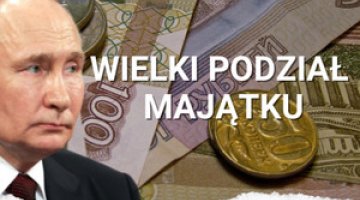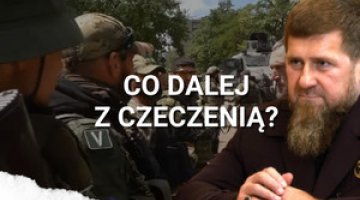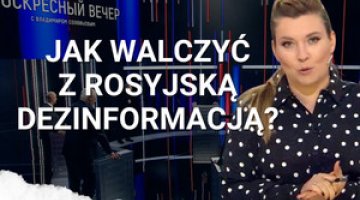Together against the West. Putin in China
During Vladimir Putin’s visit to China (16–17 May) Beijing and Moscow demonstrated the convergence of their interests and goals in international politics, as well as their readiness to continue to enhance their cooperation in all spheres, including the military. China is trying to maintain a semblance of neutrality in the Russian-Ukrainian war as well as its image as an actor seeking a peaceful solution to the conflict. Considering the growing needs of the economy of Russia, which has been put on a war footing, both sides are seeking to establish an international payment system which would be resilient to Western sanctions, especially in the context of US threats to target China’s financial sector which handles bilateral trade. However, no talks have been held on agreeing the final wording of an agreement regarding the Power of Siberia 2 gas pipeline, which is proof of a growing asymmetry in Chinese-Russian relations – to Moscow’s disadvantage. Despite this, Beijing has assured Putin of its intention to continue providing Russia with economic support, and of its friendly attitude as regards several highly important issues such as threats to freeze Russian assets and Ukraine’s attempts to mobilise its partners to support Kyiv’s peace formula. The leaders once again corroborated their shared ambitions to re-organise the global order and to coordinate their actions to erode the system of US alliances in Europe and the Indo-Pacific. In this context, they criticised several issues including AUKUS, NATO’s Nuclear Sharing programme and the US’s location of medium-range rockets in both these theatres.
An opulent setting, but few specific results
Putin’s visit was given a full diplomatic setting, which China reserves for very few selected guests. On the first day, the delegations first held a four-hour plenary meeting to discuss issues such as enhancing the structure which manages their cooperation, consolidation of the increase in bilateral trade, cooperation in the sphere of basic research, cross-border cooperation, enhanced logistical cooperation, and actions to maintain the stability of global industrial chains. Their talks also included the enhancement of military cooperation, although no details of these arrangements have been revealed. Aside from Putin, the following Russian officials took part in the visit to Beijing: the new defence minister Andrei Belousov, Secretary of the Security Council of the Russian Federation Sergei Shoigu, foreign minister Sergei Lavrov, minister of the economy Denis Manturov, central bank governor Elvira Nabiullina and numerous representatives of Russian business.
In the evening, Xi Jinping and Putin held a private meeting at the Zhongnanhai compound where China’s leaders reside. The leaders engaged in “a profound exchange of views on strategic issues of shared interest”. A communiqué published by the Chinese side indicates that the topics discussed during this meeting included the war in Ukraine. It was announced that Xi Jinping reiterated the principles of the Chinese proposal for a political solution to the conflict, and Putin supported them. On the second day of the visit Putin travelled to Harbin, where he visited the Harbin Institute of Technology, the flagship centre of scientific exchange between the two states. Accompanied by China’s vice-president Han Zheng, Putin took part in the opening ceremony of a Chinese-Russian trade exhibition.
The joint statement was the key political document signed during the visit. It was combined with several less important agreements, mainly between specific ministries (see Appendix 1). The low rank of the agreements signed does not indicate a decline in bilateral relations, but rather the depth of the effective alliance between China and Russia (see The Beijing-Moscow axis. The foundations of an asymmetric alliance). At present, the bilateral relations involve the enforcement of previously signed agreements as well as efforts to enhance cooperation in less important spheres, which is usually done at lower echelons of the government.
The Chinese-Russian ‘diagnosis’ of the global situation
The joint statement and the communiqués published by both sides indicate that China and Russia share a diagnosis of the global situation, according to which the West (mainly the United States) is responsible for mounting global destabilisation. The roots of this alleged plot include Washington’s actions intended to sustain US military domination. Moscow and Beijing are particularly opposed to the following actions: the US installing its medium-range rockets in Europe & Asia and providing them to its allies; the US constructing missile defence systems across the world and in space; the expansion of NATO’s Nuclear Sharing programme; the provision of nuclear-powered submarines to Australia under the AUKUS agreement; and actions by the US and its allies which “provoke a confrontation with the Democratic People’s Republic of Korea”. Both sides emphasised that “the US ‘Indo-Pacific strategy’ and NATO’s destructive moves in the Indo-Pacific region are having a negative impact on global peace and stability in the region”.
This propaganda statement – which involves presenting their own revisionist and aggressive policies as defence against an alleged threat – is a way for the two sides to define their shared priorities, and forms a necessary condition for the coordination of the activities they intend to take in order to deter this threat. The fact that Putin’s visit to Beijing occurred shortly after Xi Jinping’s trip to Belgrade (Xi visited Belgrade a week earlier, on the 25th anniversary of NATO’s bombing of the Chinese embassy) should also be interpreted in this context. While in its international narrative Beijing is avoiding attacking NATO directly, in its internal propaganda ‘NATO’s blood debt’ is an important element of building the conceptual foundations of an informal Chinese-Russian alliance.
The reinforcement of Chinese-Russian relations
Beijing’s and Moscow’s response to their shared perception of the threat posed by the West involves “enhanced coordination and cooperation” to counter the US policy of “dual containment” of China and Russia. They intend to further erode the US’s “domination” and to act as the main creators of an alternative global system. It seems that Beijing shares Moscow’s view that the war against Ukraine, and indirectly also against the West, is the key element of this process. Both powers are hoping that if the international community accepts “a defeat for Washington” as the war’s outcome, this could result in a collapse of the system of US alliances, not only in Europe but also in Asia. This is why Beijing is ready to support Russia’s war effort, including by selling dual-use (civilian-military) products to it and buying Russian oil and gas, as well as assisting it in circumventing technological and financial sanctions. Beijing is also opposed to the West freezing Russian assets and potentially transferring them to Ukraine.
In return, Beijing continues to have access to Russian natural resources and foodstuffs which it can buy at attractive prices. It has also secured its inland transport routes leading to both Russia and Central Asia & the Middle East, something which may prove important in the event of an armed conflict with the United States. Alongside this, numerous Chinese producers view diversification and access to new markets in Russia (see Appendix 2) as a method for securing themselves in the situation of mounting trade tensions with the West. To China, having Russia as an ally is an element of genuine support in its rivalry with the US. China and Russia have stepped up their military training activity in the South China Sea and the East China Sea. They have also increased their pressure on Japan, Taiwan and the Philippines. In Beijing’s calculus, another important motivation involves the intention to secure the authoritarian system of rule in the Russian Federation, which it views as friendly.
For Putin, the visit had two aspects: one of symbolism and prestige and one of practical economic benefit. Moscow sought to demonstrate to both its domestic and foreign audiences that it can count on Beijing’s support in the situation of a hybrid war with the West, and that China will not curb this cooperation under Western pressure. China’s declarations that it intends to continue to develop and enhance its cooperation with Russia in all spheres, including the military, are also valuable to Putin. However, there are two issues important from Moscow’s point of view which still remain unresolved after the visit. The first is an agreement regarding the Power of Siberia 2 gas pipeline. According to a statement by Russia’s energy minister Aleksandr Novak, who did not take part in the trip to China, it will be signed “in the immediate future”. Gazprom’s CEO Aleksei Miller also did not take part in the visit because at that time he was reportedly holding talks with Iran. It should be noted that China’s leaders remain reluctant to incur multiannual obligations regarding the purchase of large volumes of gas because the Chinese economy, which is undergoing an energy transition, may be unable to consume them.
Another issue which apparently remains unresolved after the visit involves payments for goods of dual (civilian-military) use. The US threats to impose further sanctions on Chinese banks and companies which support Russia’s war efforts have affected the flow of goods, and in March 2024 China’s exports to Russia fell by almost 16%, and in April by 13.5%, compared to last year’s figures. Moscow is determined to resolve the problem as soon as possible, whereas Beijing would probably prefer a multilateral solution (so-called financial multipolarity) under BRICS, as this would help it to avoid being accused of supporting Russia’s invasion of Ukraine. However establishing such a financial system will be complex and time-consuming, which works against Russia’s interests.
The two states are also coordinating their policies at the global level. Beijing is seeking a smooth integration of new BRICS members (Egypt, Ethiopia, Iran, Saudi Arabia and the United Arab Emirates), while this year Russia is chairing this format. These actions result from a conviction shared by Moscow and Beijing that the closer the integration between those states which form a counterbalance to the West, the greater their resilience to Western political and economic pressure.
Despite the increasing degree of coordination, Beijing is continuing to pursue its ‘two-faced’ policy in the context of the war in Ukraine, and has so far avoided becoming openly involved on Russia’s side. It seems at the moment that this strategy is bringing benefits. Beijing is posing as a neutral actor and faking peace initiatives (see ‘A tactical pause in relations with the West: China plays on hopes for peace’). At the same time, it signals that increasing pressure on China in order to prevent it from supporting Russia’s war effort will push it closer to the Kremlin. In this way, it can not only counter the West’s criticism of its cooperation with Russia, but it is also encouraging numerous Western politicians to seek to enhance the EU’s economic relations with China precisely under the pretext of preventing Beijing’s further rapprochement with Moscow. However, the leadership of the Chinese Communist Party may fear that Russia could draw China into an open conflict with the West before Beijing is ready for such a confrontation. The Kremlin continues to be an indispensable, or at least a convenient, partner in China’s efforts to build its self-sufficiency and boost its strategic resilience. At the same time, Beijing views Russia’s potential defeat by the West or its internal disintegration as enormous risks, because if such scenarios materialise they would most likely lead to the entire network of US alliances refocusing on containing China.
Prospects for further cooperation
In the short term, the following developments should be expected: a further consolidation of strategic energy cooperation between China and Russia; the share of local currencies in bilateral trade settlements and other forms of economic activity will increase; cooperation in the sphere of financial intelligence and counter-intelligence; and an increased exchange of state media programmes and content, including the coordination of propaganda and disinformation narratives in third countries etc. The narrative highlighting NATO’s blame for the war in Ukraine will be maintained alongside continuous accusations that the West is blocking the Chinese peace initiative. However, the development of trade is expected to slow down. The majority of the recorded trade surplus occurred in 2023, and resulted from Chinese companies substituting the products & services of Western companies which withdrew from the Russian market (see Appendix 2). Other factors curbing the development of trade include the lack of Chinese substitutes for some Western technologies and the decline in Russian consumers’ purchasing power due to the Russian economy being put on a war footing.
Both sides will continue to seek to ‘dilute’ the West’s global influence by promoting China’s alternative international initiatives such as the Global Security Initiative and the Global Civilisation Initiative, whose main aim is to promote non-interference in the political systems and internal affairs of other states; these slogans are attractive to the countries of the Global South. Moreover, the number and intensity of joint operations in the grey economy will increase (including disinformation operations), both in Europe and in the Indo-Pacific & the developing countries. Although the Russian and Chinese armed forces are not yet capable of smooth cooperation on a large scale, they have achieved a sufficiently high ability to coordinate their actions to pose a real threat to the armed forces of the United States and its allies in East Asia.
Appendix 1. Documents signed by the two states during Vladimir Putin’s visit to China on 16–17 May 2024
- A joint statement by the Russian Federation and the People’s Republic of China on deepening the Chinese-Russian comprehensive strategic partnership of coordination for the New Era in the context of the 75th anniversary of the establishment of diplomatic relations between the two states.
- An agreement between the government of the Russian Federation and the government of the People's Republic of China on the creation of a cross-border nature reserve called the Land of Big Cats.
- A protocol between the Russian Federal Service for Veterinary & Phytosanitary Supervision and China’s General Customs Administration on phytosanitary requirements applied to the Jerusalem artichokes which Russia exports to China.
- A protocol between the Russian Federal Service for Veterinary & Phytosanitary Supervision and China’s General Customs Administration on inspection, quarantine and veterinary sanitary requirements applied to the beef which the Russian Federation exports to the People’s Republic of China.
- A unified concept for development of the Bolshoi Ussuriysky Island (Chinese: Heixiazui Dao).
- A protocol of decisions between the Ministry of Economic Development of the Russian Federation and the Ministry of Commerce of the People’s Republic of China on promoting cooperation in the sphere of infrastructure and civil engineering.
- A joint action plan to implement the agreement on cooperation regarding sanitary protection of the territory signed on 4 February 2022 between the Federal Service for the Oversight of Consumer Protection & Welfare of the Russian Federation and the General Customs Administration of the People’s Republic of China.
- A memorandum between the Rossiya Segodnia International Information Agency and the Xinhua news agency on the organisation of the BRICS Experts’ Forum.
- An agreement on the exchange of information and cooperation between the Russian News Agency ITAR-TASS Federal State Company and the Xinhua news agency.
- A memorandum on cooperation between the Gazprom-Media Holding Joint Stock Company and the China Media Corporation.
- A memorandum on cooperation between the Business Russia All-Russian Public Organisation and the China Council for the Promotion of International Trade.
Appendix 2. Change in China’s exports and imports between 2021 and 2023
Table 1. China’s exports (in billions of US$)

Source: General Customs Administration of the People’s Republic of China.
Table 2. China’s imports (in billions of US$)

Source: General Customs Administration of the People’s Republic of China.





